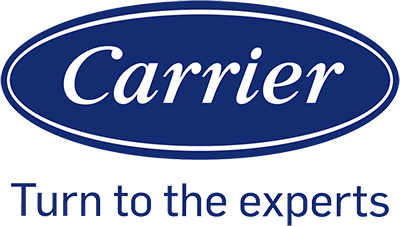When dust and debris build up in our air ducts, our HVAC system has to work harder to move air through the house. That extra effort uses more energy and drives up monthly bills. By keeping our air ducts clean, we can improve airflow and lower the amount of energy our system needs to run.
Clean ducts also help our system last longer because it doesn’t strain as much to keep the home comfortable. This simple step can reduce wear and tear while keeping energy costs under control.
As we look closer at how air duct cleaning works, we’ll see the direct impact it has on energy use, the added benefits it provides for comfort, and what to expect from professional cleaning services.
How Air Duct Cleaning Lowers Your Energy Bills
Clean air ducts help our HVAC system run more efficiently, which reduces wasted energy and lowers monthly costs. When we keep ducts clear of buildup, we improve airflow, reduce strain on equipment, and cut down on unnecessary energy consumption.
Impact of Dirty Ducts on Energy Consumption
When dust, debris, and other buildup collect inside ducts, the HVAC system has to work harder to push air through. This extra effort increases energy consumption and shortens the lifespan of the equipment.
Dirty ducts can also cause uneven heating or cooling. Some rooms may feel warmer or cooler than others, which often leads us to adjust the thermostat more than necessary. Each adjustment increases energy use and raises the energy bill.
Blocked ducts also reduce indoor air quality. While this mainly affects comfort and health, it also has an indirect effect on energy use. Poor airflow makes the system cycle more often, which drives up utility costs.
Key issues caused by dirty ducts include:
- Higher energy consumption
- Uneven airflow across rooms
- More frequent HVAC cycling
- Increased wear on system parts
By understanding these effects, we can see how duct cleaning directly connects to energy savings.
Improved Airflow and System Efficiency
Air duct cleaning restores clear pathways for air to move through the system. When airflow is unobstructed, the HVAC system can heat or cool the home faster and with less effort.
This efficiency reduces the number of cycles the system needs to maintain a set temperature. Fewer cycles mean less energy use and lower utility costs.
We also reduce the strain on major components like the blower motor and compressor. These parts no longer need to push against dust or blockages, which helps them last longer and operate more efficiently.
| Condition | Airflow Level | System Efficiency |
|---|---|---|
| Dirty ducts | Restricted | Low |
| Cleaned ducts | Unrestricted | High |
Better airflow translates directly into measurable energy savings.
Reduction in Utility Costs
When the HVAC system uses less energy, the result is lower monthly bills. Even small improvements in efficiency can add up over time, especially during peak heating and cooling seasons.
For example, if dirty ducts cause a system to run 20% longer, that extra runtime shows up directly on the utility bill. A simple cleaning can remove that wasted energy use.
We also avoid hidden costs tied to repairs and early system replacement. Cleaner ducts reduce wear, which lowers the chance of expensive breakdowns. This adds another layer of savings beyond the monthly energy bill.
Benefits of air duct cleaning for utility costs:
- Lower monthly energy bills
- Less frequent repairs
- Longer HVAC system lifespan
- Reduced overall energy costs
By keeping ducts clean, we make our HVAC system more efficient and keep energy bills under control.
Key Benefits of Clean Air Ducts
Clean ducts help us maintain a healthier indoor environment, reduce risks linked to contaminants, and protect the performance of our heating and cooling systems. By removing dust, debris, and moisture, we can support both our comfort and the long-term efficiency of our HVAC equipment.
Enhanced Indoor Air Quality
When air ducts collect dust and debris, they circulate these particles throughout the home. This can lower indoor air quality and increase exposure to allergens such as pollen, pet dander, and dust mites. Clean ducts reduce the spread of these pollutants, making the air we breathe safer.
People with asthma or allergies often notice fewer symptoms when ducts stay clean. By limiting airborne particles, we can help reduce coughing, sneezing, and other respiratory issues. This creates a more comfortable living space for everyone.
Improved air quality also benefits children and older adults, who are more sensitive to poor indoor conditions. With fewer irritants in the air, we maintain a healthier environment that supports daily activities without discomfort.
Prevention of Mold and Mildew
Moisture inside ducts creates a breeding ground for mold and mildew. These growths release mold spores that circulate through the air and may trigger allergy symptoms or worsen asthma. By keeping ducts clean and dry, we lower the chance of these problems developing.
Mold and mildew can also create odors that spread through the home. Regular cleaning prevents these smells from taking hold, keeping the indoor environment fresh.
We can also prevent damage to duct surfaces by addressing mold early. Once growth spreads, it becomes harder to remove and may require more costly repairs. Clean ducts help us avoid these issues before they escalate.
Extended HVAC Lifespan
Dust buildup forces HVAC systems to work harder. When airflow is blocked by debris, the system uses more energy to maintain the desired temperature. Clean ducts allow air to move freely, reducing strain on the equipment.
Less strain means fewer breakdowns and repairs. Over time, this can extend the lifespan of the furnace, air conditioner, and ductwork itself.
We also save money by improving energy efficiency. A system that runs smoothly uses less electricity or fuel, lowering monthly bills while keeping our home comfortable.
Professional Air Duct Cleaning Services
We rely on trained technicians to inspect, clean, and repair ductwork so our HVAC systems run efficiently. By keeping air ducts clean and sealed, we reduce wasted energy, improve airflow, and help our equipment last longer.
Inspection and Assessment
A professional air duct cleaning service begins with a full inspection of the system. Technicians check the air handler, blower motor, ductwork, and vents to identify dust buildup, blockages, or leaks. This step helps us understand the condition of the ducts before any work begins.
We also look for signs of mold, pest activity, or loose connections that could affect airflow. Using cameras and diagnostic tools, professionals can see inside the ducts without removing large sections.
An inspection ensures the cleaning process addresses the right areas. It also helps us decide if sealing or repairs are needed in addition to cleaning. Without this step, we risk missing hidden problems that drive up energy costs.
Ductwork Cleaning and Sanitization
Once the inspection is complete, technicians use specialized equipment to remove debris from the ductwork. High-powered vacuums, rotary brushes, and compressed air tools dislodge dirt, dust, and allergens that reduce airflow.
We also make sure the blower motor, coils, and air handler are cleared of buildup. Cleaning these parts improves efficiency and supports better indoor air quality.
In some cases, sanitizing agents are applied to help control bacteria or mold. These treatments are used carefully to avoid leaving chemical residue. The goal is to maintain clean air ducts that allow the HVAC system to move air freely without extra strain.
Duct Repairs and Sealing
Cleaning alone does not solve every issue. Many duct systems have leaks or gaps that let conditioned air escape. We rely on duct sealing and repair to stop this energy loss.
Technicians often use mastic sealant or metal tape to close joints and cracks. In larger cases, sections of ductwork may need replacement.
Sealing improves system efficiency because more air reaches the rooms instead of leaking into walls or crawl spaces. When combined with regular hvac maintenance and clean air ducts, these repairs lower energy use and keep the system working as intended.
Additional Considerations for Energy Savings
Keeping our air systems clean does more than lower energy costs. It also reduces safety risks, improves comfort in each room, and helps remove sources of odors and allergens that affect indoor air quality.
Dryer Vent Cleaning and Fire Prevention
When we use our dryer often, lint builds up inside the vent. This slows airflow, makes the dryer work harder, and uses more electricity. It also creates a fire hazard because lint is highly flammable.
Regular dryer vent cleaning lowers these risks. By removing lint and debris, we improve efficiency and shorten drying times. This means less wear on the dryer and lower utility bills.
We should also remember that clogged vents can push heat and moisture back into the home. This can raise indoor humidity and make our cooling system run longer in summer.
Many dryer vent cleaning services recommend an annual inspection. For households with pets or heavy laundry use, cleaning may be needed more often. Staying on schedule helps us save energy and lower the chance of a fire.
Addressing Uneven Heating and Cooling
Uneven heating and cooling often point to dirty air ducts, blocked vents, or leaks in the system. When airflow is restricted, some rooms stay warmer or cooler than others. This forces the system to run longer, wasting energy.
Cleaning ducts helps restore proper airflow. Removing dust, pet dander, and debris allows air to circulate evenly. This makes it easier to maintain a consistent temperature throughout the home.
In some cases, the issue also comes from blocked registers or poorly sealed ductwork. We can check for these problems while scheduling duct cleaning. Fixing them reduces strain on the HVAC system and improves comfort.
Balanced airflow not only saves energy but also reduces the need to adjust the thermostat often. This prevents higher bills and helps the equipment last longer.
Reducing Unpleasant Odors and Allergens
Dirty air ducts often hold dust, mold spores, and pet dander. Over time, these particles spread through the home and cause unpleasant odors. They can also trigger allergies and make the air feel stale.
Cleaning ducts removes these sources and keeps the air fresher. This is especially important in homes with pets or residents sensitive to allergens.
Odors can also come from moisture buildup inside ducts. If left unchecked, this may lead to mold growth. Regular cleaning and inspection help us spot these issues early.
By reducing allergens and odors, we improve indoor comfort while also supporting better airflow. Clean ducts let the system run more efficiently, which lowers energy use.




